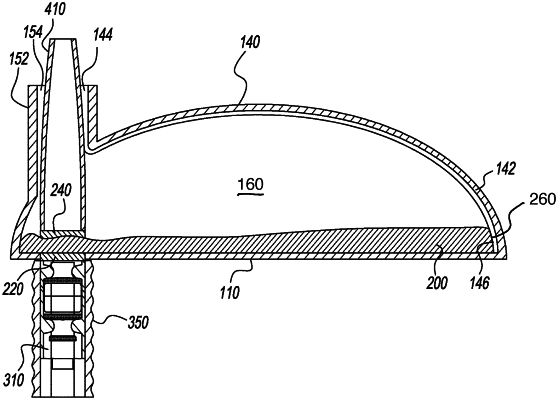| CPC A61F 5/441 (2013.01) [A61F 5/4404 (2013.01); A61F 5/4405 (2013.01); A61F 5/445 (2013.01); A61F 5/4407 (2013.01); A61F 5/449 (2013.01); A61F 2005/4455 (2013.01)] | 37 Claims |

|
1. An implantable ostomy device comprising:
an outer shell made from implant stable material, comprising a proximal member and a distal member, sealed at their peripheries and together defining a first internal cavity, configured to be implanted between skin and abdominal muscles, said outer shell further comprising an external connector disposed on the proximal side, configured to traverse through subcutaneous tissues under the skin to connect the first internal cavity to the exterior of the skin adjacent the outer shell;
a bowel connector configured to connect a patient's bowel to the internal cavity of the outer shell on the distal member, said bowel connector comprises at least one biocompatible surface; and
an inner container defining a second internal cavity and disposed inside said outer shell in the first internal cavity, said inner container comprising an inner container entry aperture and an inner container exit aperture;
a first connecting element positioned and connecting said inner container entry aperture to the bowel connector to allow the second cavity to receive contents from the bowel into the inner container through the bowel connector; and
a second connecting element positioned and connecting said inner container exit aperture to the external connector of the outer shell to allow the contents in the second cavity to leave the inner container through the external connector to the outside of patient's body.
|